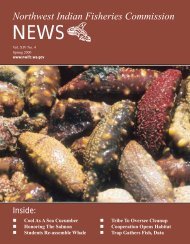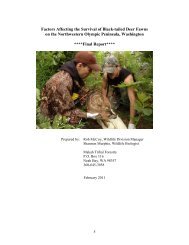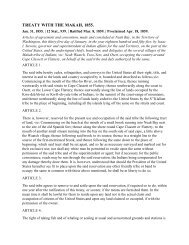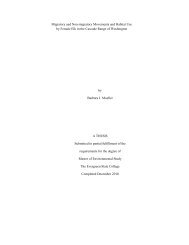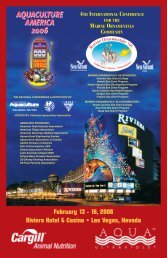DIET, NUTRITION, AND REPRODUCTIVE ... - NWIFC Access
DIET, NUTRITION, AND REPRODUCTIVE ... - NWIFC Access
DIET, NUTRITION, AND REPRODUCTIVE ... - NWIFC Access
You also want an ePaper? Increase the reach of your titles
YUMPU automatically turns print PDFs into web optimized ePapers that Google loves.
ABSTRACT<br />
Diet, nutrition, and reproductive success of Roosevelt elk in<br />
managed forests of the Olympic Peninsula, Washington<br />
Nicole R Hutchins<br />
The relationship between reproductive success, vegetation types in the home<br />
range, and diet composition and nutritional quality was examined in female Roosevelt elk<br />
on the Olympic Peninsula, Washington. Nine elk herds were radio-tracked during 2001<br />
to quantify reproductive success (as calf:cow ratio), home range size and location, and<br />
vegetation types used. I measured diet composition from fecal samples, and collected<br />
plant samples of forages found in the diet. I analyzed plant samples for nutritional<br />
quality (protein content, digestibility, and energy).<br />
Herds were grouped into highly productive (December calf:cow ratio > 0.30) and<br />
less productive (December calf:cow ratio < 0.30). Highly productive herds had more 2 –<br />
9 year old timber (P = 0.03) and less 11 – 24 year old timber (P = 0.03) available in the<br />
home range than less productive herds. Highly productive herds consumed more grasses<br />
(P = 0.008) and less shrubs (P = 0.02) and ferns (P = 0.02) than less productive herds. In<br />
addition, I found negative correlations between percentage grass or forb in the diet and<br />
percentage shrub or fern in the diet. Percentage shrub in the diet was positively<br />
correlated to percentage 20 – 24 year old timber, and negatively correlated to percentage<br />
2 – 9 year old timber available in the home range.<br />
iii



